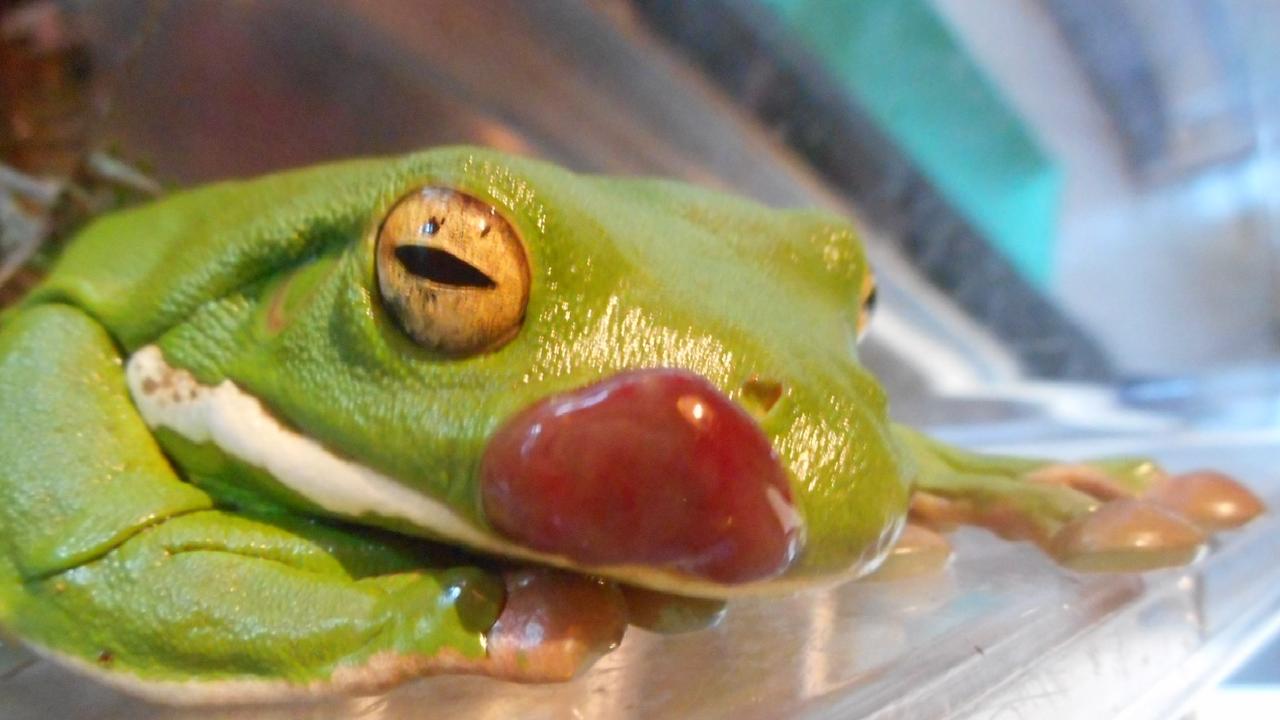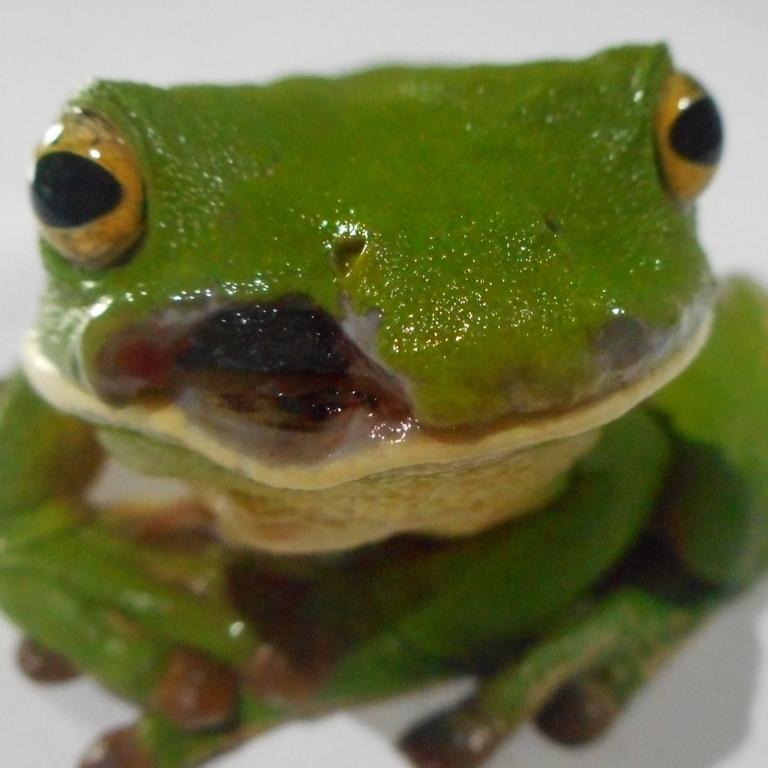New cancer detected in Far North Queensland frog population
A new threat to our frog population has been detected amid a call for further research to determine its scope. WARNING: Graphic image.
A far north Queensland frog hospital has detected a new cancer in one patient as it calls for more research into the particularly high rate of amphibian cancer in the region.
Frog Safe Inc (formerly the Frog Decline Reversal Project) is a small registered charity that runs The Cairns Frog Hospital.
Over the years the hospital has treated thousands of frogs and detected dozens of cancer cases, but recently it detected one it had never seen before.
A white-lipped tree frog found in the Ingham area was brought into the hospital with a large growth on its face, but when antimicrobial treatment targeting flesh-eaters proved ineffective (the growth actually got bigger), the frog was sent off to Cairns for further analysis.
RELATED: Famous gorilla killed by poachers
RELATED: Car-sized crocs that roamed Earth
RELATED: Gruseome find in feral cat’s stomach
Consulting vet Paul Matthews was able to remove some of the growth and send it away for a laboratory analysis.
Spindle cell soft tissue sarcoma was the verdict.
A sarcoma cancer means that the tumour it creates is malignant and cancerous.

According to Frog Safe, it’s the first verified case of this specific cancer being detected in frogs and the fifth form of cancer that’s been confirmed from cases its dealt with.
The frog is now one of 42 cancer cases the organisation is aware of.
“We haven’t seen all the cases but there are some vets that individually have had cases,” Frog Safe founder Deborah Pergolotti told news.com.au.
“For us, our group has been going almost 22 years and in that time this is the 42nd case, so usually it averages two per year.”
She said a lack of funding for analysis meant some cancers likely weren’t identified, but the rate has increased.
“This year was a bit heavier, we have had five cancer cases … the problem is starting to spread.”
The scope of the problem is still largely a mystery however.
“Nobody is researching it that we know of and that’s part of the problem.”

Ms Pergolotti said she has met with environmental ministers on the issue and held talks with government departments, so they don’t have an excuse for not being aware of it.
“Usually the meetings are very short unfortunately,” she said. “But I always have a handout to give them.”
She added it usually came down to the environment versus development and that the process is “basically becoming very transparent: development at all costs”.
“Their motivations very sadly are anything to encourage investment and development and money, money, money. When those developments are causing environmental problems you’re starting to see the little protections they have are being rolled back and that’s been especially bad recently,” Ms Pergolotti said.
She added that one of the ways to get a better idea was with the help of citizen scientists who come across frogs with strange lumps or other ulcerations.
“We can receive animals from Cooktown right down to Mackay and we can assist long-distance with cases anywhere in Australia,” she said.

It’s important to never handle frogs with your bare hands as they absorb everything through their skin.
The best practice is to wear gloves or a plastic bag to collect the frog and place it in a suitable enclosure, such as an old ice-cream container, with holes for air.
Your local vet may be able to help, but if you contact Frog Safe the organisation can also advise you.



